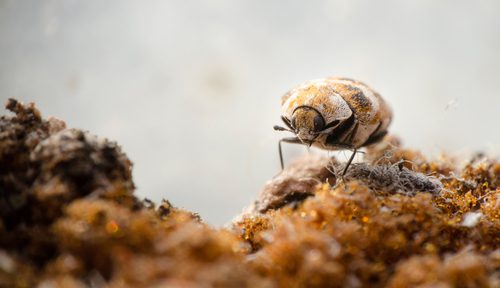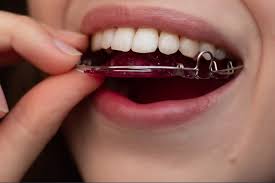If you’ve ever had itchy, red welts that showed up out of nowhere, you may have had carpet beetle bites. These little bugs may not get as much attention as mosquitoes or bedbugs, but they can make your home very uncomfortable when they get in. Anyone who lives in a place with carpets needs to know how carpet beetles bite, what the symptoms look like, and how to stop and treat them.
This in-depth guide provides comprehensive information on carpet beetle bites, including how to identify them, the reasons behind their occurrence, and effective methods for treatment and prevention. This article will provide you with everything you need to know to keep your home safe from these tiny, annoying bugs, from recognizing the signs to discussing how to eliminate them.
What Are the Bites of Carpet Beetles?
People often confuse carpet beetles with ladybugs or moths because they resemble them closely. They are minor, oval-shaped bugs. These beetles primarily feed on organic materials, including wool, feathers, and other natural fibers. Their larvae, which are small and furry, do the most damage. Carpet beetles don’t usually bite people, but their larvae will sometimes bite people, especially when they touch skin.
Most of the time, carpet beetle bites are small, red, and raised, like bites from fleas or mosquitoes. They don’t usually do a lot of damage, but the irritation and pain can be annoying. You can protect yourself and your home from future infestations by learning how these bites happen and what they look like.
Signs that a carpet beetle bites you
The symptoms of carpet beetle bites are usually the same as those of other insect bites. Carpet beetle bites, on the other hand, have some unique traits that can help you tell them apart. Here are some things to look for:
-
Red Bumps or Welts
When carpet beetles bite you, they usually leave small, red bumps or welts on your skin. These bites can appear in groups or individually, typically occurring where the skin has come into contact with carpet beetle larvae. The bumps can appear anywhere on the body, but they are most likely to happen on the arms, legs, or neck, especially if you sleep on bedding that harbours bugs.
-
Itching and Discomfort
The most common sign of carpet beetle bites is intense itching. You may feel like scratching the affected area, which could worsen the condition. If you scratch, the bite may worsen and become more likely to become infected. The itching can last for a few hours or days, depending on the severity of the bite.
-
Swelling and Inflammation
In some cases, the skin around the bite may swell or become inflamed. The area may become redder, and the swelling may worsen. This reaction is usually more pronounced in areas where the skin is thinner, such as the face or neck.
-
Blisters or Rashes
In rare cases, carpet beetle bites can cause more severe reactions, such as blisters or a rash. This is especially true for people with sensitive skin or those who are allergic to insect bites. It’s essential to treat the area promptly if you notice blisters or a rash to prevent it from worsening.
If you know what these symptoms are, you can quickly tell when a carpet beetle has bitten you and take the proper steps to stop the pain.
What makes carpet beetle bites
Carpet beetles aren’t as aggressive as mosquitoes, but they will bite people if they touch them. These are some common reasons why carpet beetles bite:
-
Attracted to Human Skin
Carpet beetles are usually drawn to warmth and the smell of human skin. They mainly eat natural fibres like wool and silk, but if they’re hungry, they might crawl on your skin. If your bedding or clothes are full of carpet beetle larvae, this is especially true.
-
Larvae Feeding
The larvae of carpet beetles are the main reason people get bitten. These larvae are small, fuzzy, and can crawl on your skin to find food. They often eat items such as clothing, carpets, and bedding. If you have an infestation in your home, the larvae might crawl onto your skin by accident and bite you.
-
No Natural Predators
Carpet beetles can do well in places where there are no natural predators. Carpet beetles can quickly multiply when there are no predators around, like ants or some kinds of wasps. This means there will be more larvae, which increases the likelihood of bites.
You can take steps to protect yourself from carpet beetles and avoid more pain if you know what causes their bites.
How to Keep Carpet Beetles from Biting
It’s always better to stop something from happening than to deal with it afterwards. The best way to avoid getting bitten by carpet beetles is to keep them from getting into your home in the first place. Here are some good ways to keep carpet beetles away:
-
Cleaning and vacuuming regularly
The best way to keep carpet beetles from infesting your home is to clean it frequently. Be sure to vacuum your carpets, rugs, and furniture well, paying special attention to cracks and crevices where beetles might be hiding. Remove the vacuum bag immediately to prevent bugs from reentering your home.
-
Seal Entry Points
Cracks and gaps in windows, doors, and walls are common entry points for carpet beetles. Inspect your home for potential entry points and seal them with caulk or weatherstripping to prevent beetles from entering. This will help stop infestations before they even start.
-
Use Insect Repellents
Some insect repellents, especially those containing cedarwood or lavender, are effective in keeping carpet beetles away. You can use these natural repellents in areas where carpet beetles are likely to hide, such as attics, closets, and other storage spaces.
-
Proper Fabric Storage
Store woollen clothes, carpets, or other fabrics that attract carpet beetles in airtight plastic bags or containers. This will keep beetles from getting to your clothes and other items, thereby reducing the likelihood of an infestation.
-
Check out new things
Check new furniture, clothes, or fabric for signs of carpet beetles before bringing them into your home. This will help keep pests from entering your home and reduce the risk of an infestation. You can lower the risk of carpet beetles entering your home and infest it by taking these steps.
How to Treat Bites from Carpet Beetles
If you do get bitten by carpet beetles, here are some good ways to ease the pain and speed up the healing process:
-
Clean the Area
To clean the bite site, wash it gently with mild soap and lukewarm water. This will help remove any dirt or germs that may have entered the bite, thereby reducing the risk of infection.
-
Use a cold compress
Place a cold compress or ice pack on the affected area to help reduce swelling and itching. Place a cloth around the ice pack and apply it to the bite for 10-15 minutes at a time. This will help calm the skin and bring down swelling.
-
Use creams that stop itching
Over-the-counter creams, such as calamine lotion or hydrocortisone, can help ease the itching and swelling caused by carpet beetle bites. Ensure you read the product directions carefully and use the cream as instructed.
-
Take Antihistamines
If your skin is very itchy or swollen, you might want to take an antihistamine like Benadryl. This can help stop the itching and calm your body’s allergic reaction. Before taking any medications, especially if you have any health problems already, talk to a doctor.
-
Get Medical Help
It’s essential to see a doctor if the bites cause serious problems, such as blisters, infections, or excessive swelling. To help control the symptoms and stop them from getting worse, a doctor can give you stronger medicines like corticosteroids.
In conclusion: How to Keep Carpet Beetles Bites from Biting You
People may not be as familiar with carpet beetle bites as they are with mosquito or flea bites, but they can still be very painful and annoying. You can lower your risk of getting these tiny pests by learning how to spot carpet beetle bites, why they happen, and how to treat them.
To keep carpet beetles from entering your home, it is essential to clean it regularly, seal off entry points, and use insect repellents. If carpet beetles bite you, simple things you can do at home, such as cleaning the area, applying a cold compress, and using anti-itch creams, can help alleviate the discomfort.
You can keep your home free of carpet beetles and enjoy a comfortable, bite-free living space if you take the proper steps to stop them.





